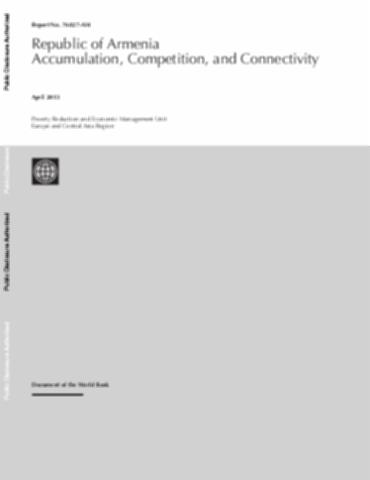Resource information
By 2013, the Armenian economy has left behind most of the hangover from the global financial crisis and a look at medium-to long-term growth drivers is therefore in order. Real Gross Domestic Product (GDP) growth reached 7.2 percent in 2012, and the current account deficit narrowed, although it remained high. Macroeconomic buffers have been rebuilt to some extent, although the public debt-to-GDP ratio, at 44 percent, remains too high to relax fiscal restraints. The central tenet of this report is that the government's job creation agenda requires a different growth model than the one followed before the global crisis. Reaching the goals of the government's strategy will require a combination of four factors: 1) higher investment and better financial intermediation between savers and investors; 2) better utilization of the labor force, including the largely untapped resource of Armenians abroad; 3) stronger competitive pressures in the markets for goods and services, which will improve incentives for companies to innovate, adopt new technologies, and become more efficient; and 4) enhanced connections of the landlocked Armenian economy with world markets, including through land, air, and through internet and communication technologies. This report's theoretical framework emphasizes structural reforms to drive growth. Economic growth theory distinguishes between accumulation of the factors of production and enhancing the productivity with which these factors are employed.


